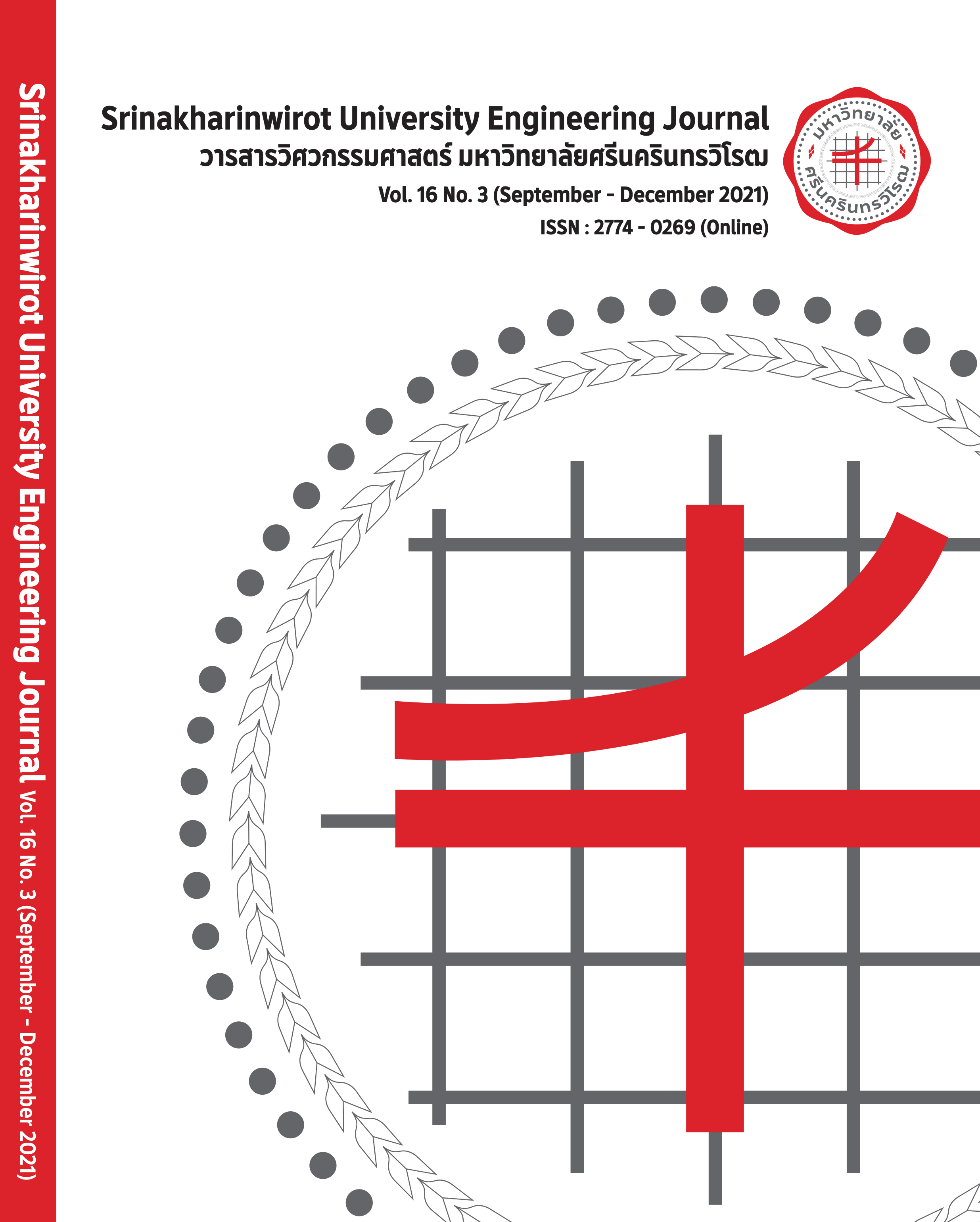Reduction of Defective Rate from Crack Defects in Painting Process of Motorcycle Parts
Main Article Content
Abstract
This research aims to reduce the defective rate in the painting process of motorcycle parts. This research applied the Six Sigma approach. Firstly, the problem statement was defined. Secondly, the accuracy and precision of the inspection system were appraised. Next, the potential causes for crack defects were analyzed. Then, the four factors were statistically tested: cleaning temperature, cleaning pressure, electrodeposited paint voltage, and sanding method. In the improvement phase, the sanding method was improved to be both horizontal and vertical sanding. In addition, Box-Behnken design was applied to find out the optimal levels of the three remaining factors. The optimal setting was at the cleaning temperature of 40 degrees Celsius, cleaning pressure of 1.4 kilograms per square centimeter, and electrodeposited paint voltage of 180 volts. After that, the optimal setting was applied in the process to confirm the experimental result. Finally, a new control plan and work instruction were adjusted to control the process after the improvement. After improvement, the defective rate due to crack defects decreased from 3.82 percent to 0.98 percent. The improvement is expected to reduce the rework cost of 81,257 baht based on the forecasted production volume of 95,069 units in 2021.
Article Details

This work is licensed under a Creative Commons Attribution-NonCommercial-NoDerivatives 4.0 International License.
Copyright belongs to Srinakharinwirot University Engineering Journal
References
O. Saravari, Surface Coating (Paint, Varnish and Lacquer). Bangkok: Chulalongkorn University Printing House, 2001.
K. Srinivasan, S. Muthu, N. K. Prasad, and G. Satheesh, "Reduction of Paint line Defects in Shock Absorber Through Six Sigma DMAIC Phases," Procedia Engineering, vol. 97, pp. 1755-1764, 2014.
T. Sansom, "Black-Seed Defect Reduction in Painting Process of Plastic Front Car-Bumper By Six Sigma Approach," M.S. thesis, Department of Industrial Engineering, Faculty of Engineering, Chulalongkorn University, 2008.
A. Hongsapan, "Defect Reduction in Painting Process of Car-Bodywork By Six Sigma Approach," M.S. thesis, Department of Industrial Engineering, Faculty of Engineering, Chulalongkorn University, 2010.
T. Pyzdek, The Six Sigma Handbook: A Complete Guide for Green Belts, Black Belts, and Managers at All Levels, 5th ed. New York: McGraw-Hill Professional, 2018.
Y. Fasser and D. Brettner, Process Improvement in the Electronics Industry. New York: John Wiley & Sons Inc., 1992.
N. Thawesaengskulthai, Quality Engineering and Management Guide to Continual Improvement and Innovation Creation. Bangkok: Chulalongkorn University Printing House, 2019.
T. Senprom, "Glass-Mold Defective Reduction in Plastic Lens Manufacturing Process Using Six Sigma Approach," M.S. thesis, Department of Industrial Engineering, Faculty of Engineering, Chulalongkorn University, 2007.
D. C. Montgomery, Design and analysis of experiments, 10th ed. New Jersey: John Wiley & Sons, 2019.
J. L. Devore, Probability and Statistics for Engineering and the Sciences, 9th ed. USA: Brooks/Cole, 2016.
N. Akafuah, S. Poozesh, A. Salaimeh, G. Patrick, K. Lawler, and K. Saito, "Evolution of the Automotive Body Coating Process—A Review," Coatings, vol. 6, no. 2, 2016.
S. Narayanan, "Surface Pretreatment by Phosphate Conversion Coatings - a Review," Advanced Materials Science, vol. 9, pp. 130-177, 2005.
Y. Oyabu, N. Furuno, Y. Hirasawa, and H. Omori, "Electrodeposition Coating Process for Automobile Bodies," Transactions ISIJ, vol. 23, pp. 994-1008, 1983.
B. Müller and U. Poth, Coatings Formulation: An International Textbook. Germany: Vincentz Network, 2011.


